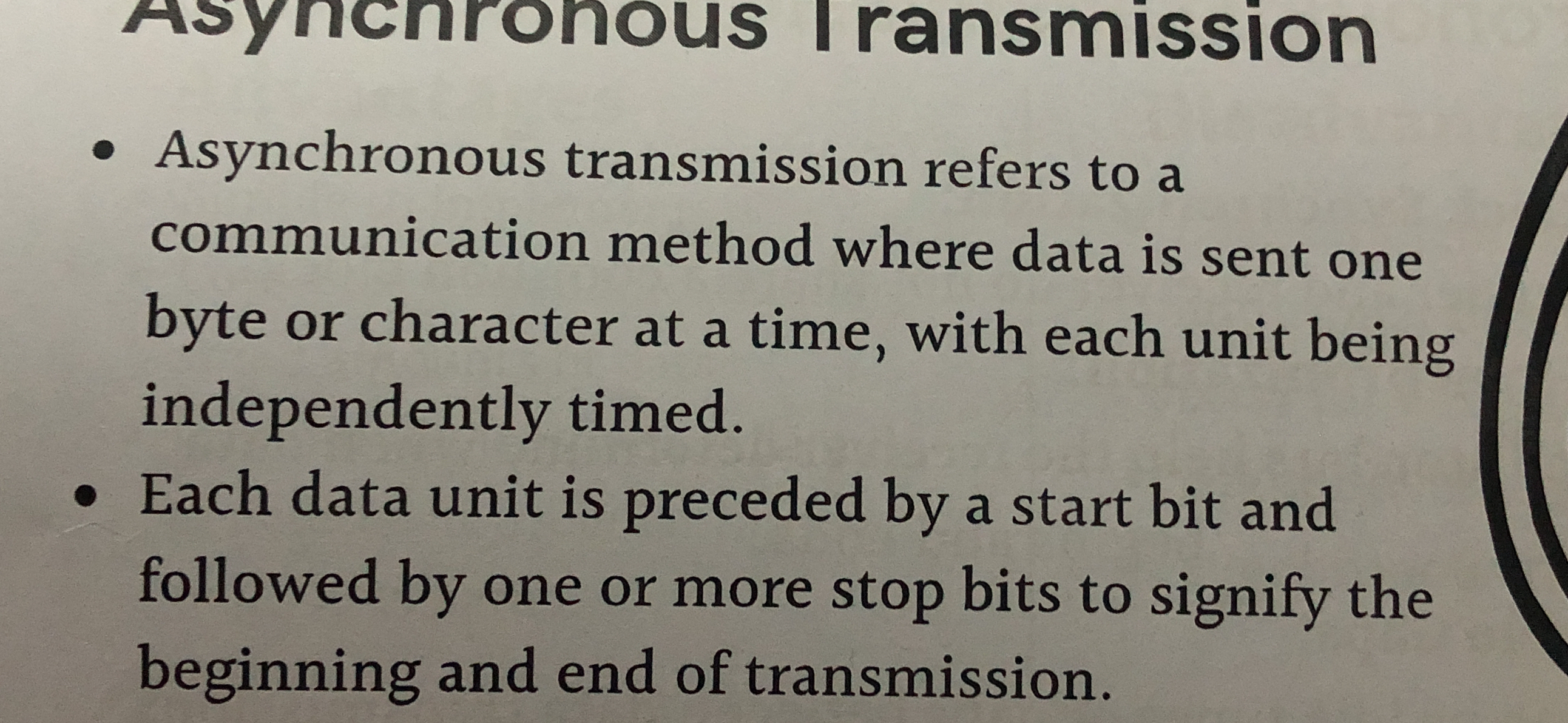What is asynchronous transmission?

Understand the Problem
The text is explaining the concept of asynchronous transmission, detailing how it works as a method of communication where data is sent in individual bytes or characters, each with its own independent timing. It also describes how each data unit is structured with a start bit and stop bits.
Answer
Asynchronous transmission uses start and stop bits for each data unit.
Asynchronous transmission sends data one byte or character at a time, using start and stop bits to mark each unit's beginning and end.
Answer for screen readers
Asynchronous transmission sends data one byte or character at a time, using start and stop bits to mark each unit's beginning and end.
More Information
Asynchronous transmission is often used in situations where clock synchronization is difficult or unnecessary.
Tips
Confusing it with synchronous transmission which uses a continuous clock signal for timing.
Sources
- Difference Between Synchronous and Asynchronous Transmission - byjus.com
- Asynchronous transmission - IBM - ibm.com
- Definition of Asynchronous Transmission - Gartner - gartner.com
AI-generated content may contain errors. Please verify critical information